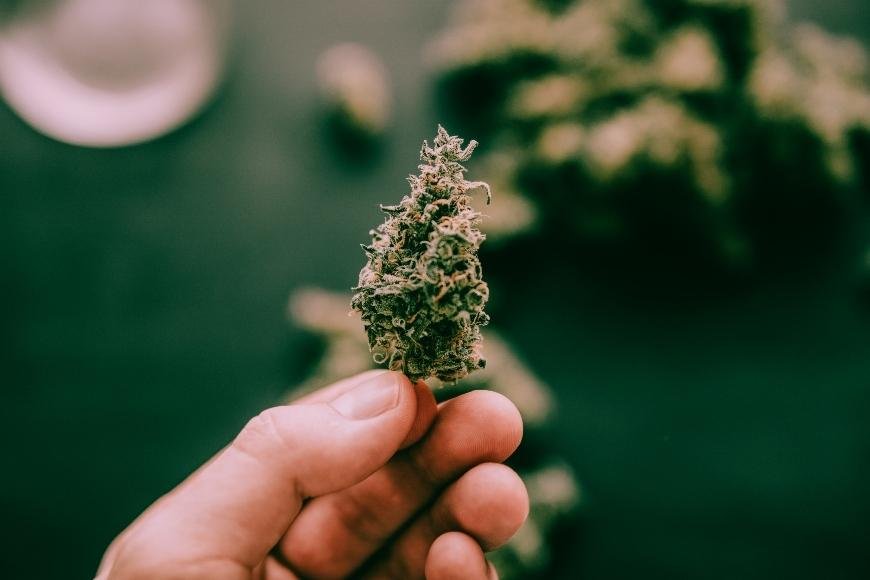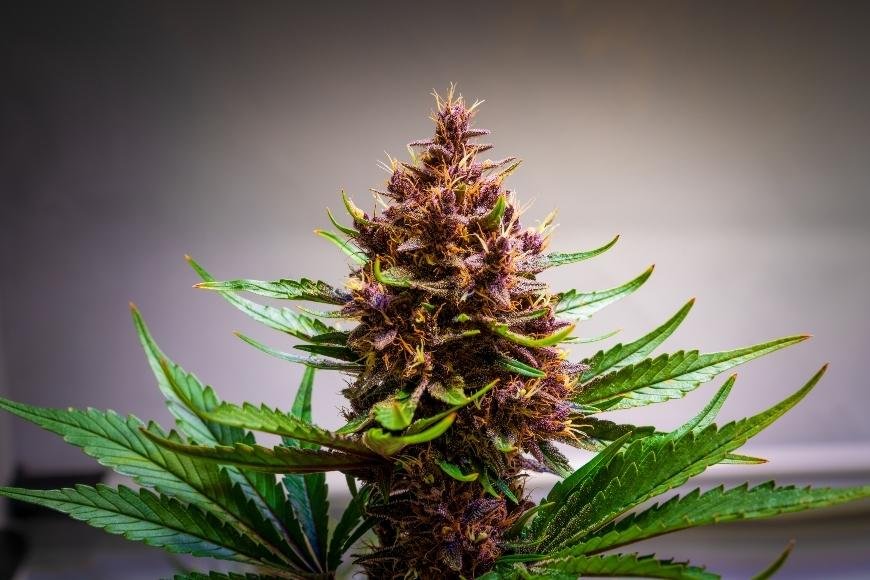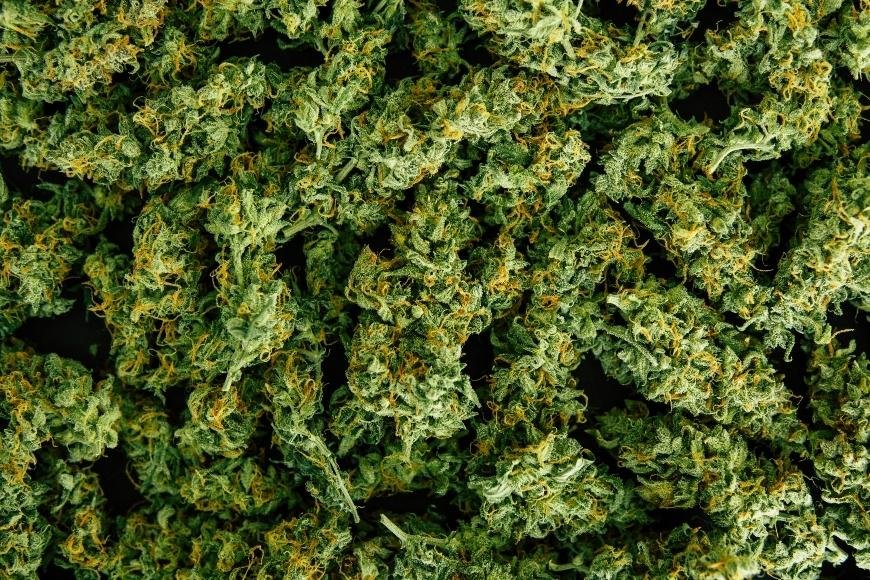How to Maximise Autoflowering Cannabis Yields
Learn how to maximise autoflowering cannabis yields with top strategies, including high-yielding strains and ideal growing environments.

Discovering how to maximise autoflowering cannabis yields can be a game-changer for recreational growers seeking the most potent and abundant harvests. Autoflowering plants have come a long way, with modern strains offering impressive results when given proper care. In this blog post, we'll explore various techniques that will help you achieve exceptional yields from your autoflowers.
We'll begin by discussing the importance of choosing high-yielding strains and providing quality soil and nutrients for optimal plant growth. Then, we'll delve into creating an ideal growing environment that caters to the unique needs of autoflowering cannabis plants.
Furthermore, we'll cover essential training techniques to maximize bud production while also touching on best practices for timing watering and feeding schedules. Lastly, maintaining a clean growing area and regularly checking for pests & diseases are crucial steps in ensuring healthy plants capable of producing great yields.
By following these expert tips on how to maximise autoflowering cannabis yields, you're well on your way towards cultivating thriving crops that will reward you with bountiful harvests time after time.
Table of Contents:
- Choosing High-Yielding Strains
- Quality Soil and Nutrients
- Ideal Growing Environment
- Training Techniques
- Timing Watering and Feeding
- Maintaining a Clean Growing Area
- Regularly Checking for Pests & Diseases
- Frequently Asked Questions How to Maximise Autoflowering Cannabis Yields
- Conclusion
Choosing High-Yielding Strains
When it comes to maximizing autoflowering cannabis yields, selecting the right strain is crucial. Autoflowering strains are known for their rapid growth and shorter flowering time compared to photoperiod plants. However, not all autoflowers are created equal when it comes to yield potential.
To ensure you're growing a high-yielding strain, consider these factors:
- Genetics: Choose strains with proven genetics that have been bred specifically for high yields.
- Breeder reputation: Purchase seeds from reputable breeders who have a track record of producing quality, high-yielding autoflowers. Check online forums and reviews to find out which breeders other growers recommend.
- Growth characteristics: Look for strains with vigorous growth patterns that can support larger buds without becoming too tall or unwieldy in your grow space.
In addition to choosing the right strain, keep in mind that even within a single strain there can be variation between individual plants due to genetic diversity. To maximize your chances of getting top-notch results, start by germinating more seeds than you plan to grow and select the healthiest, most vigorous seedlings for your final plant count.
When selecting a strain with high yields, it is necessary to take into account the genetic makeup and environmental factors for achieving optimal output. Quality soil and nutrients are also essential for maximizing cannabis yields; without them, even the best strain won't reach its full potential.
Quality Soil and Nutrients
Using quality soil and nutrients is crucial for providing your autoflowering cannabis plants with the necessary elements to grow, thrive, and produce maximum yields. To ensure that your plants receive all the essential nutrients they need, consider these important factors:
Selecting the Right Soil Mix
The ideal soil mix for autoflowering cannabis should be light, well-draining, and rich in organic matter. Some popular options include coco coir, peat moss-based mixes or even pre-made super soils specifically designed for growing cannabis. Make sure to choose a high-quality soil mix from a reputable brand to avoid any potential issues.
Fertilizers & Nutrients
Autoflowering strains require specific nutrient ratios throughout their life cycle due to their rapid growth rate. It's essential to use fertilizers formulated explicitly for cannabis plants as general-purpose plant food may not provide adequate nutrition levels needed by your autoflowers.
- Vegging stage: During this phase of growth, your autoflowers will benefit from higher levels of nitrogen (N) which promotes healthy leaf development.
- Blooming stage: As flowering begins, you'll want to switch over to bloom-specific nutrients containing higher amounts of phosphorus (P) and potassium (K), which are vital for bud formation.
You can find various liquid or powder nutrient solutions on the market tailored specifically towards growing marijuana. Be sure to always follow manufacturer instructions when applying nutrients to avoid overfeeding your plants.
pH Level Management
Accurately managing the pH of your soil is a must to ensure that plants can effectively take in nutrients. Autoflowering cannabis prefers a slightly acidic soil with a pH range of 6.0-7.0. Invest in a quality pH meter and adjust the pH levels accordingly using products like dolomite lime or phosphoric acid, depending on whether you need to raise or lower it.
To ensure maximum yields, quality soil and nutrients are essential for growing autoflowering cannabis. Attending to the requirements of your plants is now a top priority in order to achieve optimal yields.

Ideal Growing Environment
Proper illumination, temperature, moisture content and air flow are all necessary components that help ensure the general well-being and efficiency of your vegetation. In this section, we will discuss each factor in detail and provide tips on how to optimize these conditions for your autoflowering cannabis plants.
Lighting
The right amount of light plays a significant role in the growth and development of your autoflowering cannabis plants. Autoflowers typically require 18-24 hours of light per day throughout their entire life cycle. It's important to invest in high-quality grow lights, such as LED or HPS lights, which can deliver the full spectrum needed by your plants. Make sure you adjust the height of your grow lights according to the plant's growth stage so they receive adequate light without getting burned.
Temperature & Humidity
Maintaining optimal temperature and humidity levels is vital for healthy plant growth and increased yields. For optimal growth, autoflowering cannabis strains typically thrive in temperatures ranging from 68°F (20°C) to 77°F (25°C). However, it's essential to monitor nighttime temperatures as well since drastic fluctuations can stress out your plants.
Humidity levels should be adjusted depending on the different stages of plant growth:
- Vegging Stage: Maintain a relative humidity level around 60% during early vegetative growth.
- Blooming Stage: Gradually decrease humidity levels down to about 40% during flowering phase.
- Final Weeks: Lower humidity levels to around 30% during the last few weeks of flowering to prevent mold and bud rot.
You can use a hygrometer to accurately measure humidity levels in your grow space. Investing in a humidifier or dehumidifier will help you maintain optimal conditions for your plants.
Ventilation & Air Circulation
A well-ventilated growing area is essential for preventing issues like mold, pests, and stagnant air that can negatively impact plant growth. Good ventilation also ensures that fresh CO2-rich air reaches your plants, promoting photosynthesis and healthy growth. To achieve proper ventilation, consider using oscillating fans inside the grow room along with an exhaust fan connected to a carbon filter for odor control.
The ideal growing environment for autoflowering cannabis includes factors such as temperature, light cycle, humidity and air circulation. With these conditions in place, growers can now focus on training techniques to maximize yields.
Training Techniques
These methods help you control the growth and shape of your plants, leading to better light exposure and increased bud production. Two popular training techniques for boosting autoflowering cannabis yields are topping and low-stress training (LST).
Topping
Topping is a high-stress technique that involves cutting off the main stem's growing tip, which encourages the plant to grow multiple colas instead of just one central cola. This results in more branches with buds, ultimately increasing your overall yield. However, keep in mind that topping can be stressful for autoflowers since they have a shorter vegetative period compared to photoperiod strains.
To top an autoflowering cannabis plant correctly:
- Wait until your plant has developed at least 4-5 nodes.
- Carefully cut off the newest growth on top using clean scissors or pruning shears.
- Monitor your plant closely after topping to ensure it recovers well from stress.
Low-Stress Training (LST)
LST, as its name suggests, is less stressful than topping but still highly effective in increasing yields. The goal of LST is gently bending and tying down branches so that all parts of the plant receive equal light exposure while maintaining an even canopy height. By doing this, you'll encourage horizontal growth rather than vertical growth - making optimal use of available space and promoting higher bud production throughout the entire plant.
To perform LST on your autoflowering cannabis plants:
- Gently bend each branch away from the main stem, being careful not to snap or damage them.
- Use soft plant ties or string to secure branches in their new position. Take care not to bind too firmly, as this can lead to tension and harm.
- Adjust ties as needed throughout the growth cycle to maintain an even canopy height and ensure all parts of the plant receive equal light exposure.
In addition to topping and LST, there are other training techniques such as supercropping, fimming, and defoliation that you can explore. However, these methods may be more suitable for experienced growers due to their complexity or potential risks if done incorrectly. For beginners looking into maximizing autoflowering cannabis yields, starting with topping and LST is a great way to learn about plant manipulation while seeing positive results in your harvests.
Timing Watering and Feeding
Autoflowers have a shorter life cycle compared to photoperiod plants, which means they require specific care in terms of water and nutrient intake. By providing the necessary hydration and nourishment at the right moments, it is possible to ensure your plants develop robustly and result in increased yields.
Watering Schedule for Autoflowers
Autoflowering cannabis plants typically need more frequent watering than their photoperiod counterparts due to their rapid growth rate. However, overwatering can be detrimental as well. To strike the perfect balance:
- Check soil moisture: Before watering your autoflowers, stick a finger about an inch into the soil; if it feels dry or only slightly damp, it's time to water.
- Avoid overwatering: Make sure not to saturate the soil completely when watering; instead aim for even distribution throughout the pot without causing puddles on top.
- Maintain proper drainage: Ensure that excess water drains out from pots by using containers with drainage holes or adding perlite/vermiculite mixtures into your growing medium. This will prevent root rot caused by stagnant water around roots.
Nutrient Feeding Schedule for Autoflowers
In addition to properly timed watering practices, providing adequate nutrients plays a vital role in maximizing autoflower yields. Keep these tips in mind when developing a feeding schedule for your autoflowers:
- Vary nutrient concentrations based on plant stage: Different stages of growth require different nutrient concentrations. During the vegetative stage, autoflowers need higher levels of nitrogen, while during flowering they require more phosphorus and potassium.
- Start with a light feeding schedule: Autoflowering cannabis plants are generally more sensitive to nutrients than photoperiod strains. Begin by providing half or even quarter strength nutrient solutions and gradually increase as needed based on plant response.
- Monitor pH levels: Maintaining proper pH levels in your growing medium is essential for optimal nutrient uptake. Maintaining the proper pH range of 6.0-7.0 for soil and 5.5-6.5 for hydroponic systems is critical to enabling nutrient uptake and thus achieving maximum yields from your autoflowering cannabis plants.
Proper timing of watering and feeding is essential to maximize autoflowering cannabis yields. It's essential to keep the cultivation environment tidy for top-notch outcomes.
Maintaining a Clean Growing Area
Keeping your autoflowering cannabis growing area clean is essential for preventing pests and diseases from damaging the plants and reducing yields. A well-maintained environment not only keeps your plants healthy but also ensures that you get the most out of each harvest. Here are some tips to help you maintain a clean growing space:
- Remove dead leaves and debris: Regularly remove any fallen leaves, dead plant material, or other debris from your grow room floor or pots. This will prevent mold growth and discourage pests from taking up residence in your garden.
- Clean tools and equipment: Make sure to sanitize all gardening tools, containers, trays, and other equipment regularly with a mild bleach solution or rubbing alcohol. This helps minimize the risk of spreading pathogens between plants.
- Air circulation: Proper air circulation is crucial for maintaining a healthy environment for your autoflowering cannabis plants. Use oscillating fans to keep fresh air moving around the grow room at all times while ensuring proper ventilation through exhaust systems.
- Avoid overwatering: Overwatered soil can create an ideal breeding ground for fungi like root rot-causing Pythium spp., which can devastate entire crops if left unchecked. To avoid this issue, make sure not to water too frequently or allow standing water to accumulate in your growing area.
- Quarantine new plants: If you introduce new plants into your grow room, keep them separated from your existing crop for at least a week or two. Before introducing new plants to your grow room, keep them isolated from the rest of your garden for at least two weeks in order to ensure they are free from any potential pests or diseases.
In addition to these tips, always wash your hands before handling cannabis plants and avoid touching them unnecessarily. The less direct contact with the plant material, the lower the risk of introducing pathogens or damaging delicate foliage.

Regularly Checking for Pests & Diseases
Keeping a close eye on your autoflowering cannabis plants is crucial to catch any potential pests and diseases early on, before they cause significant damage or reduce yields. Carrying out regular inspections is essential for detecting any pests or diseases early on and managing them effectively.
Why Regular Inspections are Important
By regularly inspecting your plants, you can identify issues at an early stage when they're easier to manage. This proactive approach helps prevent extensive damage to your crops and ensures that you get the maximum yield possible from your autoflowering cannabis plants. Create a routine of inspecting your plants on a daily or bi-weekly basis in order to quickly detect any issues that may arise.
Common Signs of Pest Infestations
- Aphids: These small insects suck sap from plant leaves, causing them to curl up and turn yellow. Aphids also excrete honeydew which attracts ants and promotes mold growth. Look out for clusters of tiny green or black bugs under leaves or along stems.
- Mites: Spider mites are another common pest in cannabis cultivation; these microscopic arachnids create fine webs around leaves while feeding off plant tissue. Affected foliage may appear speckled with white spots due to their feeding habits.
- Fungus Gnats: Fungus gnats are small, dark-colored flies that lay their eggs in the soil. Their larvae feed on plant roots and can stunt growth or even kill young plants. Look for tiny flying insects around your plants or crawling on the soil surface.
- Whiteflies: Whiteflies are tiny white insects that suck sap from leaves, causing them to turn yellow and eventually die off. They're often found on the undersides of leaves and may fly away when disturbed.
Common Signs of Diseases
- Powdery Mildew: This fungal disease appears as a white powdery substance on leaves and stems. It can spread rapidly if left untreated, reducing photosynthesis capacity and overall yield.
- Bud Rot: Bud rot is caused by a fungus that thrives in damp conditions with poor air circulation. Infected buds will appear brownish-gray with a slimy texture; they should be removed immediately to prevent further spreading.
- Mold: Mold typically grows in humid environments where there's insufficient airflow around cannabis plants. Watch out for fuzzy gray or green patches on your buds, which indicate mold growth.
By regularly checking your autoflowering cannabis plants for pests and diseases, you can address issues early on and protect your crops from potential damage. This proactive approach will help ensure that you maximize yields while maintaining the health of your plants.
Frequently Asked Questions How to Maximise Autoflowering Cannabis Yields
How do I get the highest yield from Autoflower?
To achieve the highest yield from autoflowering cannabis, choose high-yielding strains, use quality soil and nutrients, create an ideal growing environment, apply training techniques such as Low-Stress Training (LST), time watering and feeding correctly, maintain a clean growing area, and regularly check for pests and diseases. Proper care throughout the growth cycle is essential for maximizing yields.
What is the average yield of Autoflower cannabis?
The average yield of autoflowering cannabis varies depending on factors like strain genetics, environmental conditions, and cultivation practices. Generally speaking, indoor growers can expect around 1-2 ounces (28-56 grams) per plant while outdoor growers may see 2-6 ounces (56-170 grams) per plant. High-yielding strains can produce even more under optimal conditions.
What makes autoflower buds bigger?
Bigger autoflower buds are achieved through proper nutrition with phosphorus-rich fertilizers during flowering stage; consistent lighting schedules using powerful LED or HPS lights; maintaining appropriate temperature ranges between 68°F to 77°F (20°C to 25°C); applying Low-Stress Training methods to increase light exposure; ensuring adequate airflow within grow space; avoiding overwatering or underwatering plants.
What is the highest yielding most potent Autoflower?
The highest yielding and most potent autoflowers combine both impressive yields with high THC content. However, potency and yield may vary depending on cultivation techniques, environmental factors, and the individual grower's skill level.
Conclusion
Maximising autoflowering cannabis yields requires a combination of factors, including choosing high-yielding strains, using quality soil and nutrients, providing an ideal growing environment, implementing training techniques, timing watering and feeding correctly, maintaining a clean growing area, and regularly checking for pests and diseases. By following the above tips throughout your plants' growth cycle, you can anticipate a noteworthy rise in yield.





















































































































